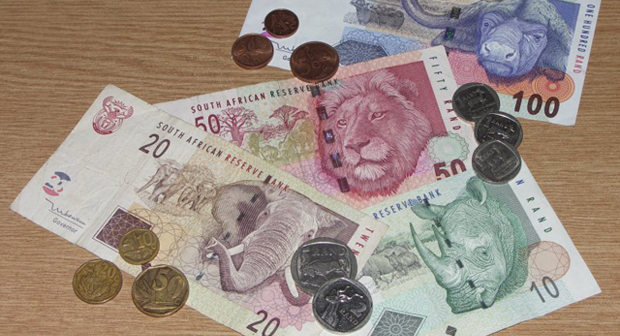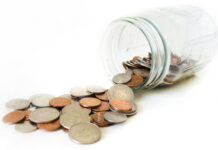The Rand lost 40% of its value against the US dollar since the beginning of 2015, and 29% over the past six months. What’s going on? Is it the president? Is it Pravin? And, crucially, can we actually do anything about it? MUSA MANZA explores.
Repeat after me: supply and demand
Our exchange rate (the price we pay for US dollars, Indian rupees and Brazilian reals) – like that of most other countries – is determined by the demand for it and the supply of it. When people want more of something and the supply is limited – like office space in Sandton – the price goes up. When folks want less of something (or when the supply is great) the price comes down – like Bafana jerseys after 2010. When demand for the rand is greater than supply, the rand strengthens. Foreign folks demand more rands when they want to buy South African products (like our platinum and rooibos) or assets in South Africa – like mansions in Clifton, shares on the JSE or SA Treasury bonds.
So what caused the change in demand and supply for South African assets and products? The factors which affect the value of our rand are multiple, and may have occurred at the same time. It is therefore not possible to pinpoint which factors caused which changes. But we can try.
We’re selling fewer music albums
South Africa trades a lot with the world economy. By international standards, our total exports and imports are large compared to the size of our economy. However, we tend to import more than we export. Higher imports mean a lot more rands being sold by South Africans (higher supply) to buy foreign currency so we can import Samsung tablets from Korea and clothing from Bangladesh. Lower exports mean less rands being bought by foreigners to buy our platinum, sugar and Mi Casa albums. In recent years, South Africa’s exports grew slowly due to low demand and labour strikes. In addition, the price we received for exports fell – like the platinum price which fell by 29% since the beginning of last year. This caused the rand to weaken.
Investors are flakes
South Africa is integrated into the global economy and has a well-developed stock exchange – the JSE. There is a lot of buying and selling of the rand that takes place on a daily basis. These investors and speculators – generally men sitting in offices in New York and London — buy shares in companies on the JSE or bonds from our government. They buy if they think they can make money and sell when they think they can’t. Profit is their sole pursuit. Sometimes, they keep these shares and bonds for a long time; often they’re just speculating and will sell as soon as other better-looking options pop up. They run at the first sign of trouble.
The American economy is minting it
Since 2014, the US economy has experienced some recovery after many years of poor growth. With the lure of higher profits in the US, investors began taking their money out of developing economies like South Africa, Brazil and Turkey, to invest in the US. They sold their South African, Brazilian and Turkish assets so they could buy US assets. The lower demand for the rand weakened it.
The recovery of the US economy is one of many factors informing investors’ decisions on where to invest. Investors take domestic factors of a country seriously. They look at country’s interest rate and level of inflation. A higher interest rate means higher profit for investors, while high inflation means the profit is worth less. To keep inflation down, the South African Reserve Bank has increased interest rates 3 times over the past 12 months – a total of 1%. Despite its efforts, inflation still remains uncomfortably high, affected by many factors out of its control.
We’re not growing
Important among investors’ concerns are the profitability and safety of their assets in South Africa. As higher economic growth generally means higher profitability, investors consider the country’s level of growth. The South African economy has grown slowly in recent years, with the economy shrinking in the second quarter of 2015. The economy is expected to only grow by about 0.7% this year – its lowest rate since 2009. Poor growth performance and expectations that it will worsen reduce demand for South African assets which as a consequence, weaken the rand.
First Zuma whipped, and then he Nene’d
Investors also pay close attention to local developments which affect the economy. Social and political instability raise concerns over the ability of the economy to grow, and this causes investors to think twice about South African assets. When President Zuma replaced the capable and respected Nhlanhla Nene with an “unknown†Des Van Rooyen as finance minister in December last year, investors voted against the move with their money. The mass sale of South African assets resulted in the rand losing over 8% of its value in 3 days. Even Mr Zuma noticed – he replaced his new appointment with the experienced Pravin Gordhan after the 4th day.
RELATED: Mr President, just tell us what you are thinking
And now?
The price of platinum, the performance of the global economy, and demand for our exports affect the value of the rand, but are out of our control. We are at the mercy of the world economy here. Yet, there are several things that we can do to prevent further rand weakness. These include avoiding silly political decisions, shortening labour strikes, appointing competent people in key government posts, spending wisely and promoting investment. These will not make the rand as strong as the dollar or euro, but it won’t be as weak as it is now.
Manza Musa is a rebel economist.









